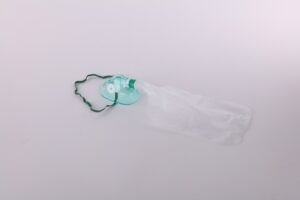Monkeypox occurs in monkeys in the rainforests of central and western Africa. It can also infect other animals and occasionally humans. The clinical manifestations are similar to smallpox, but the disease is mild. The disease is caused by the monkeypox virus. It belongs to a virus group that includes the smallpox virus, the virus used in the smallpox vaccine, and the vaccinia virus. It needs to be differentiated from smallpox and chickenpox. This virus can be transmitted from animals to humans through direct and close contact, and can also be transmitted from person to person, mainly through blood and body fluids. However, monkeypox is far less contagious than the smallpox virus.
Diagnosis: In humans, monkeypox is a sporadic, sporadic disease with signs and symptoms similar to smallpox, usually mild. Most medical staff are unfamiliar with monkeypox and smallpox. Monkeypox-infected individuals with a history of exposure to animals initially present with “flu-like” symptoms, followed by herpes, pustules, and scarring on the skin.
Laboratory examination: Through PCR technology, monkeypox genome fragments can be detected from the skin lesions of monkeypox patients, providing a basis for rapid clinical laboratory diagnosis; the monkey smallpox can also be isolated from skin lesions by electron microscopy or culture Virus. In addition, the fluorescent antibody methods and radioimmunoassay can detect simian variola virus antibodies from the serum of infected persons, but they are generally only used for epidemiological investigations.

1. The entire detection process should be operated in the reagent preparation area, sample processing area, and PCR amplification in strict accordance with the requirements of this manual. The lab coats, instruments, and consumables in each area should be used independently and cannot be mixed; The sample processing area should be equipped with a biological safety cabinet, and the sample processing should be performed in the biological safety cabinet; the three areas should be equipped with ultraviolet sterilization devices.
2. In order to avoid RNA degradation, the sample processing process should be operated at 0-4.
C and the test should be carried out immediately after the experiment is completed; the equipment and consumables used in the sample processing process should be ribozyme-free.
3. Negative and positive controls should be set for each experiment.
4. All reagents in the kit should be fully thawed and mixed at room temperature before use, and should be centrifuged briefly.
5. The negative and positive controls in the kit should all be transferred to the specimen preparation area before one use and stored separately.
6. To prevent fluorescence interference, avoid direct contact with the PCR reaction tube with bare hands, and avoid any labeling on the PCR reaction tube.
7. Instrument Amplification-related parameters should be set according to the relevant requirements of this manual; reagents of different batches cannot be mixed.
8. In the parameter setting of the ABI series fluorescence quantitative PCR instrument, do not select ROX correction and select None for the quenching gene.
9. The waste of the product during the experiment should be disposed of harmlessly before being discarded.






